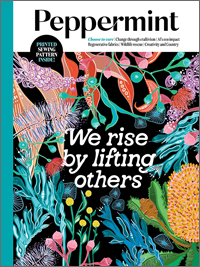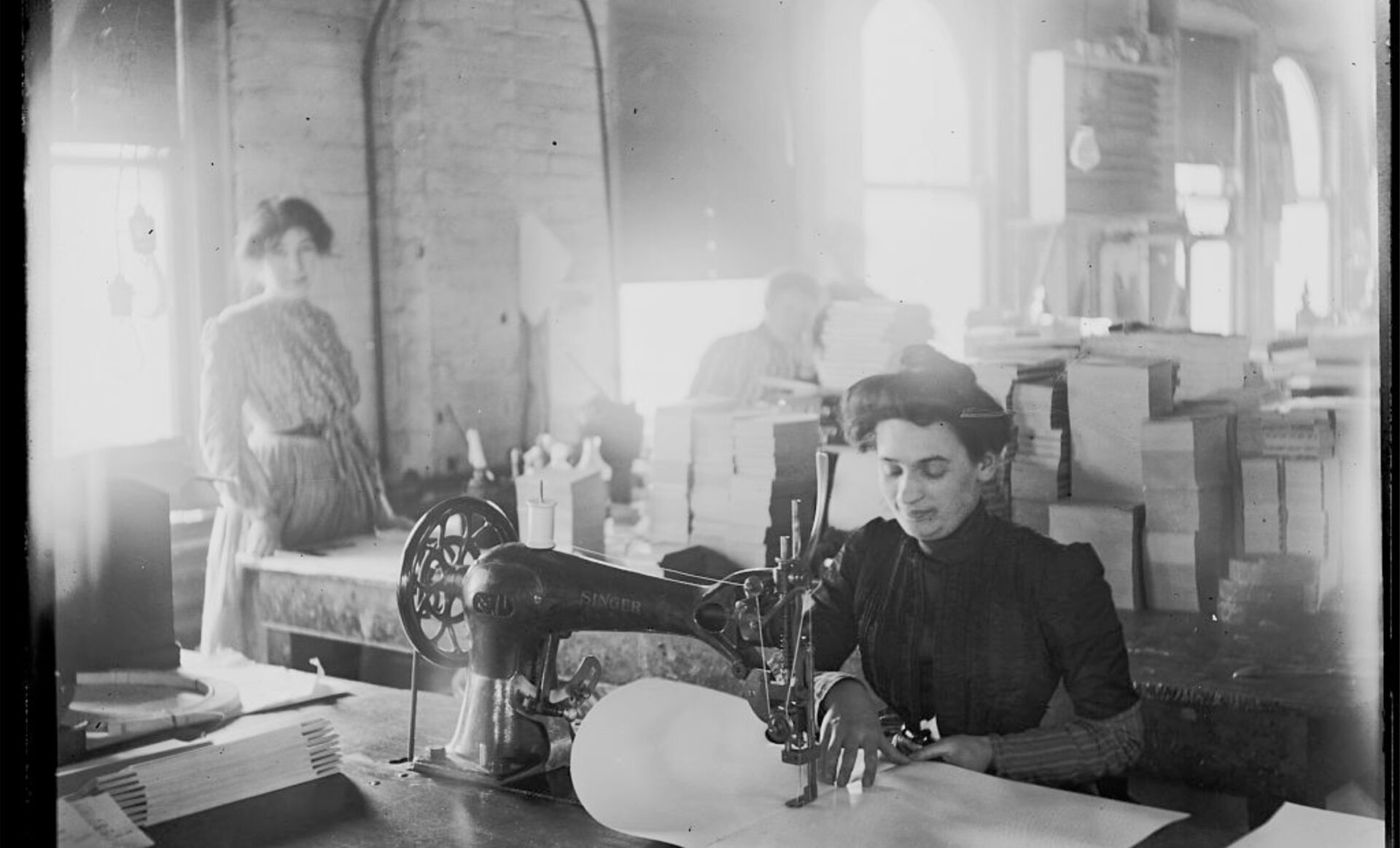
Celebrating Stitches: It’s National Sewing Machine Day
Hey sewists! Get baking because the 13th of June is National Sewing Machine Day and that sounds like an excuse for cake if ever we heard one.
As the workhorse that enables us to transform our creative ideas into wearable wonders, comforting quilts, handy homewares and glorious gifts aplenty, the sewing machine is a pivotal feature in every sewing space. Our sewing machines have borne witness to some of our most proud, satisfying, challenging and frustrating creative moments. They’ve facilitated our successes, our learning curves and have seen us at our best… and at our less-than-best.
Maybe yours is a treasured family heirloom which was made to last and is so reliable that you’ve never needed to upgrade from the machine your beautiful grandma taught you to sew on. Or it could be the latest digital masterpiece which does everything from sewing without you touching the pedal to threading the needle itself, giving you a heads up when it needs to be oiled and never letting you lose a round of bobbin roulette. These marvelous machines have been the weaver of stories and source of passed-on skills for generations.
If you’ve ever worked on a poor quality or poorly maintained sewing machine (no shame), you know for sure that the whole experience is less enjoyable. Sometimes you spend more time fixing than sewing and you end up with a disappointing make at the end. While we often feel that the sun shines from our magnificent machines, let’s not ignore the times when they’ve done us dirty. Unexpected birds’ nests of thread under your fabric, feed dogs munching down on your garment, needles breaking. There are plenty of times when our machines are the recipients of a few choice words (some of which are permanently emblazoned by way of a passionately worded sew-in label) but, ultimately, we forgive our machines every time because without them our creative expression would be diminished. Gone would be the days of “thanks, I made it” or “it has pockets!” and the general self-affirming smugness that comes from walking around in something that you made with your own two hands (and one trusty machine).
So, whether you use the tool storage compartment for tools or for sewing snacks, take a moment to marvel at the wonder of your best sewing friend, the MVP of your sewing room and reflect on how lucky we are to have access to this great tool that allows us to develop our skills and express ourselves through textiles.
Here are some ideas of what you can do to celebrate your machine this National Sewing Machine Day:
DUST THAT BABY!
Grab your lint brush and sweep away the tiny fibres that are snuggled into all the crevices of your machine.
OIL IT UP!
Using sewing machine oil (and the guidance of your manual), put a tiny drop on any moving part. Don’t be heavy handed here because you run the risk of oil dripping through the machine and onto your fabric.
CHECK IT OVER!
Whip out that tiny screwdriver and use it to ensure the shank of your machine is firmly attached. Use it to also check the screws on any complex attachments you have (such as a quilting foot).
RE-THREAD IT!
Now that your machine has had a thorough once-over, pop in a fresh needle and re-thread it so it’s all set up and ready for your next project.
And if the next project on your table happens to be a Peppermint pattern, be sure to tag us so we can bask in the glory of what you and your machine have created together. Happy National Sewing Machine Day!
Top image: Richmond & Backus Co. sewing room, Detroit, between 1900 and 1910. Detroit Publishing Company photograph collection (Library of Congress).
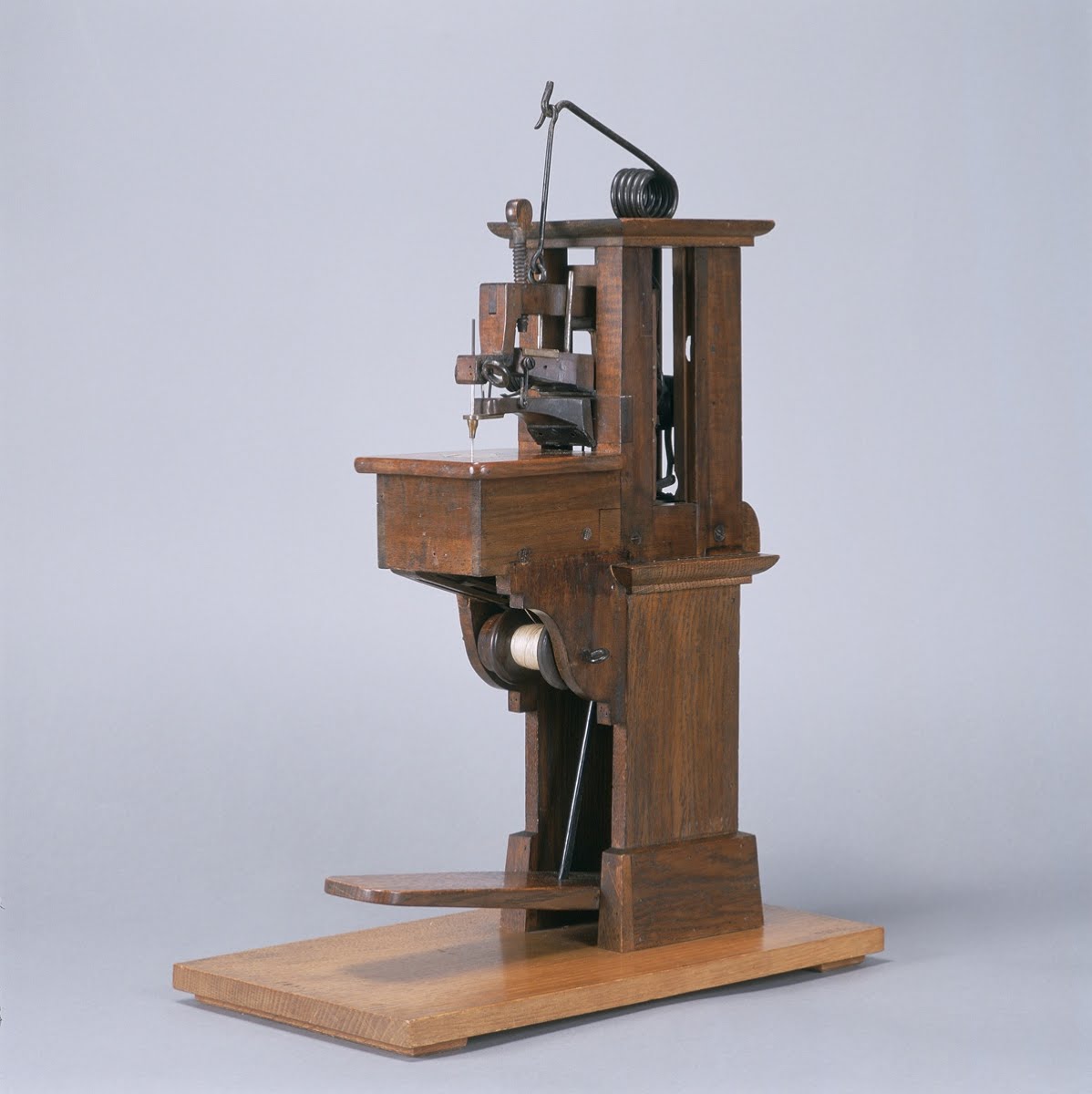
Sewing machine by Barthélemy Thimonnier in 1830. Musée Des Arts et Métiers by Pascal Faligot.
A stitch of history
Wondering when these much-loved machines came into the world? Well, according to Wikipedia, Charles Fredrick Wiesenthal, a German-born engineer working in England, nabbed the first British patent in 1755, for a “mechanical device to aid the art of sewing”. In 1790, English inventor and skilled cabinet maker Thomas Saint upped the ante by inventing the first sewing machine design. His device included many practical and functional features like an overhanging arm, feed mechanism (for short lengths of leather), vertical needle bar and a looper. His machine was very advanced for the era, but the concept would need steady improvement over the coming decades before it became practical enough for popular use. In 1874, sewing machine manufacturer William Newton Wilson found Saint’s drawings in the UK Patent Office, made adjustments to the looper, and built a working machine, currently owned by the Science Museum in London.
In 1804, Englishmen Thomas Stone and James Henderson built a sewing machine, and Scotsman John Duncan constructed a machine for embroidering. Australian tailor Josef Madersperger started developing his first sewing machine in 1907, finally presenting a working device to the public in 1814. But the first practical, widely used sewing machine was invented by Barthélemy Thimonnier, a French tailor, in 1829. His machine sewed straight seams using a chain stitch like Saint’s model had, and in 1830, he signed a contract with Auguste Ferrand, a mining engineer, who made drawings and submitted a patent application. The patent for his machine was issued on 17 July 1830, and in the same year, he and his partners opened the first machine-based clothing manufacturing company in the world to create army uniforms for the French Army. However, the factory was burned down, reportedly by workers fearful of losing their jobs, following the issuing of the patent.
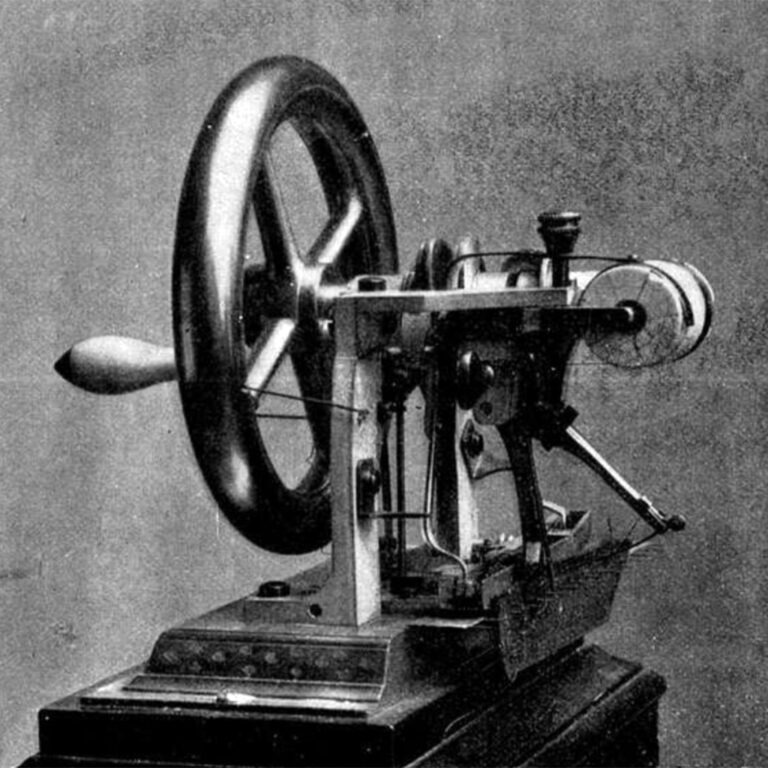
Elias Howe’s 1846 sewing machine, as featured in Scientific American Magazine in 1896.
The first machine to combine all the disparate elements of the previous half-century of innovation was built by English inventor John Fisher in 1844, a little earlier than the very similar machines built by Isaac Merritt Singer in 1851, and the lesser known Elias Howe, in 1845. But Fisher botched filing his patent and ended up not getting recognition for the modern sewing machine, after legal tiffs with Singer. Howe, meanwhile, created his sewing machine in 1845 using a similar method to Fisher’s, except that the fabric was held vertically. He also made an important improvement: to have the needle running away from the point, starting from the eye. After a long stint in England trying to attract interest in his machine, he returned to America, only to find various people infringing on his patent. In contrast to Fisher, Howe did go on to win a case for patent infringement in 1854, and the right to claim royalties from the manufacturers using ideas covered by his patent, including Singer.
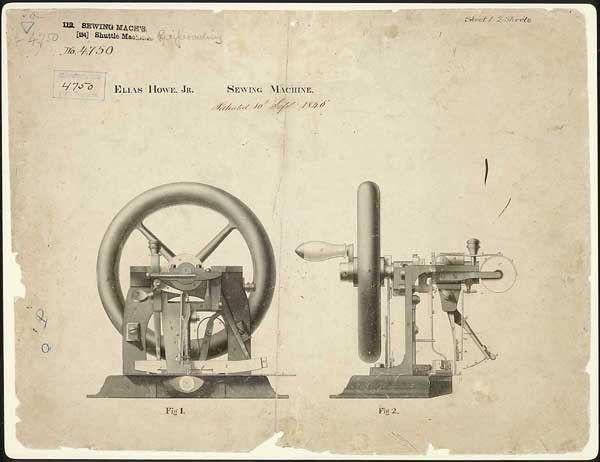
A drawing from Elias Howe’s patent for a sewing machine, 1846, from the records of the Patent and Trademark Office.
In 1851, Singer was granted their own American patent. The foot treadle, used since the Middle Ages, was adapted to drive the sewing machine, leaving both hands free. Throughout the 1850s many more companies popped up with various ideas and improvements, with each trying to sue the others for patent infringement. This triggered a patent thicket – ‘an overlapping set of patent rights’ which requires innovators to reach licensing deals for multiple patents – known as the Sewing Machine War.
In 1856, the Sewing Machine Combination was formed, consisting of Singer, Howe, Wheeler, Wilson, and Grover and Baker. These four companies pooled their patents, with the result that all other manufacturers had to obtain a license for $15 per machine. This lasted until 1877 when the last patent expired.
Karl Friedrich Gegauf created the first hemstitch machine in 1893, capable of sewing 100 stitches per minute, launching the company that would become BERNINA. They also invented the first portable zigzag machine in 1945. Electricity powered a whole new era in 1889 with the first electric machine – introduced by Singer – and the computer age ushered in a raft of new technologies with electronic machines hitting the market in the 70s.
So what does the the future of sewing look like? Think automated sewing machines that use artificial vision technology to detect and follow the edges of fabrics, internet connectivity features, pedal-less sewing, automatic bobbin changers, voice guided machines, and even Sewbots – industrial robots with automation that can autonomously handle entire sewing processes. Whatever your machine looks like, we salute the creation of this life- and wardrobe-changing invention!

